Words Allison Reiber DiLiegroDate 20 July 2022
While the scale remains relatively small, forward-looking designers and architects are already calling upon innovative biomaterials to create more sustainable, often carbon-negative products and structures.
Simple and essential, “biomaterials” come from nature and can be returned to nature. Many of these resources—including timber, clay, leather, and wool—have been used since the earliest days of building and making. Today, materials designers are creating new solutions that call upon forgotten or neglected resources, reference traditional and indigenous wisdom, harness the power of nature in modern ways, and can replace or ease the burden on non-renewable resources such as steel, cement, and crude oil, which is used to make plastic.
Lucas De Man
From an environmental perspective, biomaterials are a compelling choice: These materials are biodegradable and store carbon dioxide, which means they can lower the carbon footprint of a product or a building during its lifetime. Less well known is the fact that these materials can often perform just as well, sometimes better, than less sustainable alternatives.
We spoke with visionary designers, architects, and thinkers about some of the most inspiring biomaterials that we can already use to build and create today.
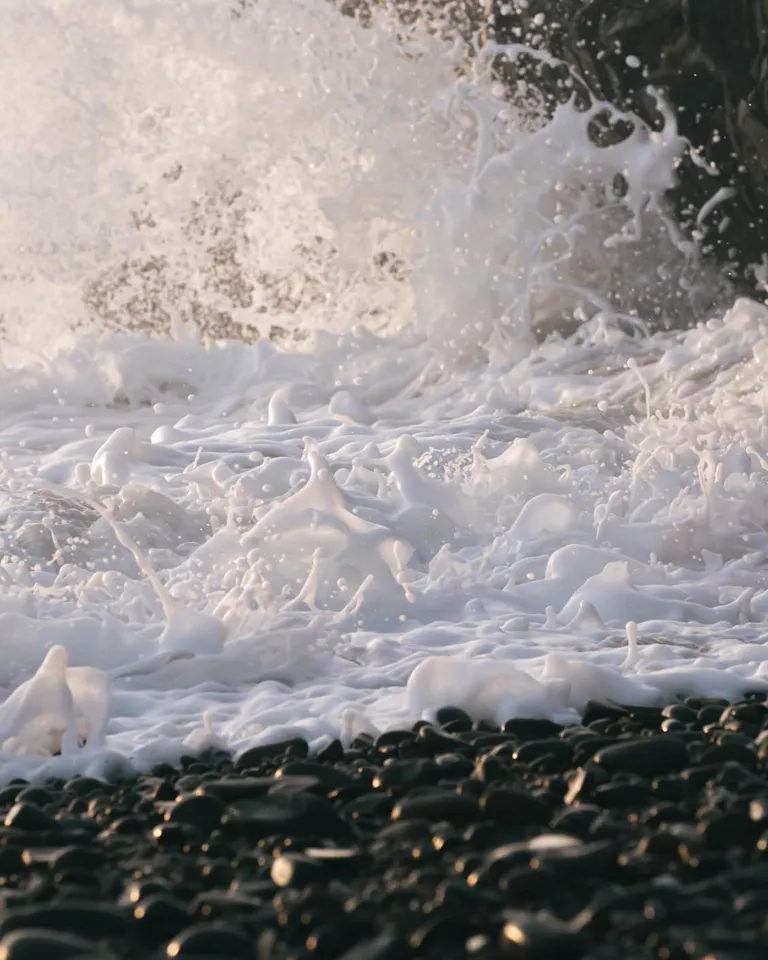
Seeking inspiration in the sea Image, Sam Scales
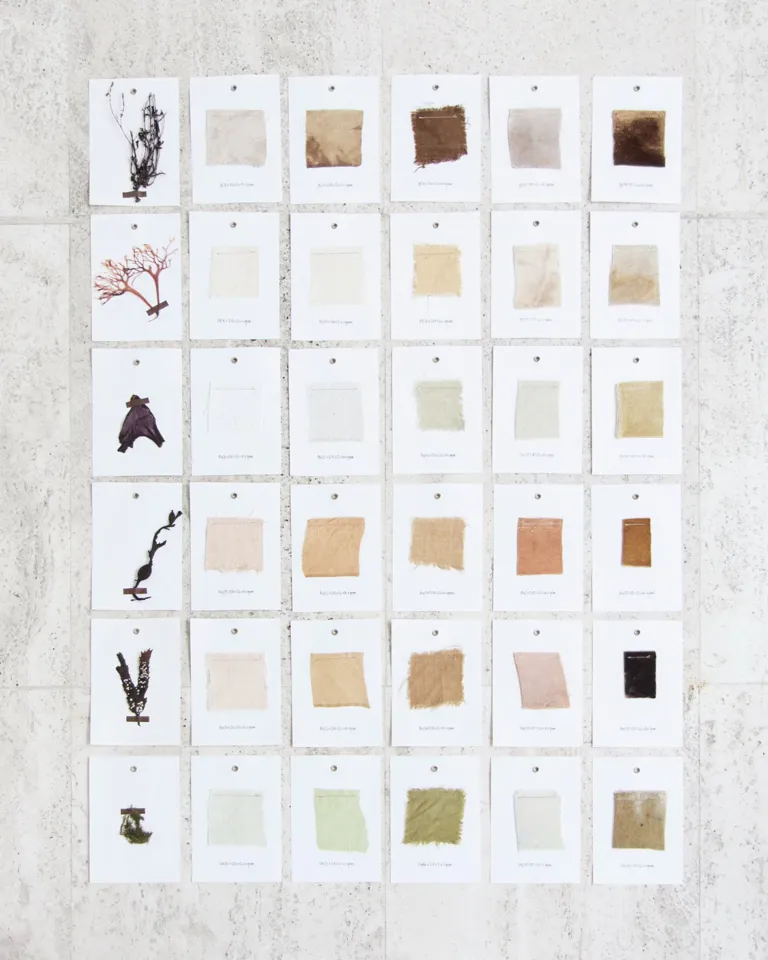
Shades of algae by Studio Nienke Hoogvliet Image, Femke Poort
This family of aquatic plants ranges from tiny plankton to great, flowing sea kelp. Algae is a particularly promising material when it comes to climate change, as these plants can absorb at least twice as much carbon dioxide as other plants. Studies show that one acre of algae can remove up to 2.7 tons of carbon dioxide per day. And thanks to its versatility and vibrant colors, algae can be processed to create a range of plastic-like materials.
It’s a favorite material of Lucas De Man, the founder of Biobased Creations by New Heroes, where his team models possibilities and celebrates the impact of biomaterials in a circular society through storytelling. For Dutch Design Week 2021, De Man’s team created The Exploded View Beyond Building, a house made of 100 biomaterials that are already or soon to be available. “Our goal was to show what is already possible, not what will be possible one day,” De Man tells us.
The long list of materials includes eggshells, mussel shells, fruit leather, filtered sewage, and, yes, algae. In one of several applications, the team used agar, a gelatin substitute made from algae, to create glossy, fully compostable textiles to create shining, translucent wall hangings.
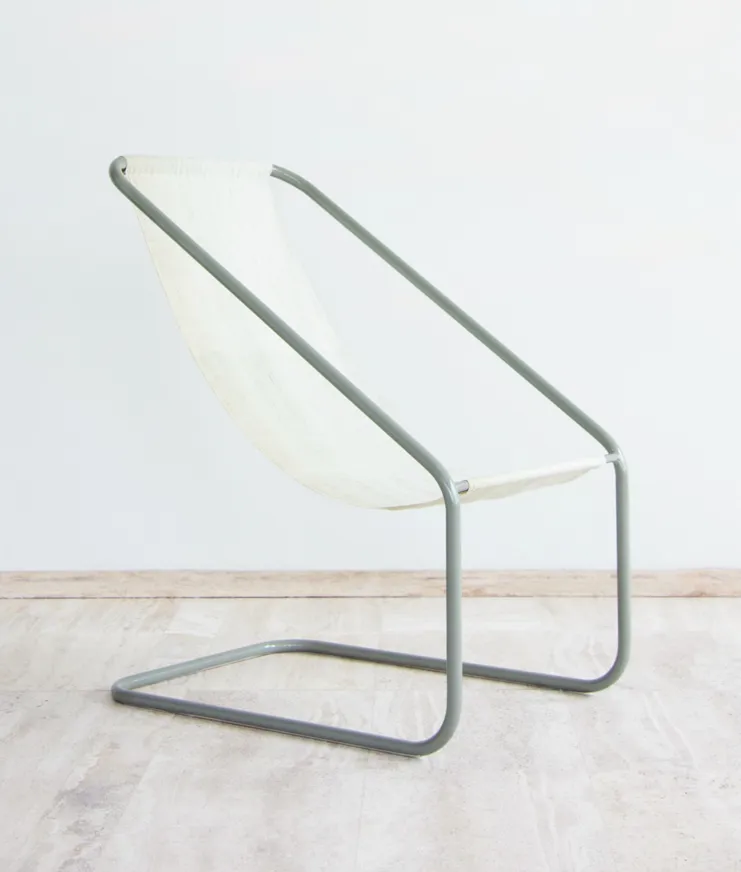
Chair made of seaweed yarn and dyed with seaweed Image, Femke Poort
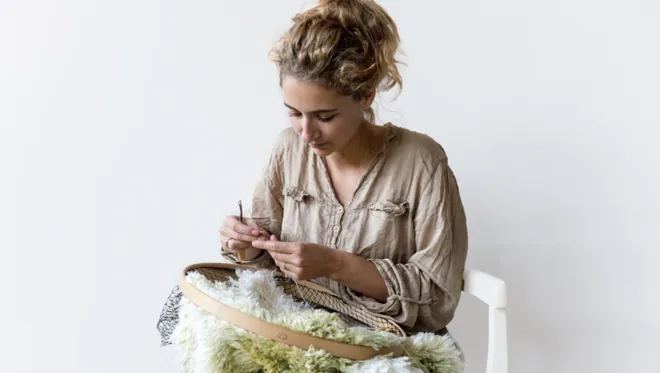
Hoogvliet making a rug from sea algae yarn Image, Hannah Braeken

Seaweed grows fast and cleans the ocean Image, Hannah Braeken
Nienke Hoogvliet also explores the sheer beauty of algae through her eponymous studio, which focuses on material research and experimental and conceptual design. As she tells us, “Seaweed is an incredible raw material because it grows fast, it doesn't need fresh water, and it cleans the ocean.”
Pictured above, her project “SEA ME” is a rug made of dyed sea algae yarn, knotted by hand inside an old fishing net. “I thought it was a beautiful example of the contrast between the plastic waste that lands in our oceans and the natural beauty of the ocean.”
After completing “SEA ME,” Hoogvliet continues to research seaweed to explore how these natural dyes could be used to reshape the textile industry. She is currently working to expand the color palette, which includes earthy shades of purple, brown, green, and beyond. The studio is working to upscale these processes to make them available to the larger industry.
Nienke Hoogvliet
Algae is also a champion material of Notpla, a London-based startup creating sustainable alternatives to plastic packaging. Made primarily from seaweed, Notpla’s compostable, edible material has been used to create sachets and packaging for drinks, condiments, self-care products, and more. Notpla is now creating travel-sized toiletries for hotels in their biodegradable sachets.
“Plastic can be really good for long-term certain applications, but when we're using it in a single-use packaging application, it just doesn’t make sense,” Karlijn Sibbel, Design Director at Notpla, tells us. “If we don't use plastics, we can rethink how we use and design packaging. As this packaging dissolves, we can cook with it, we can add flavors to it. It can disappear in the shower so you have nothing left. It completely changes how we think about these materials.”
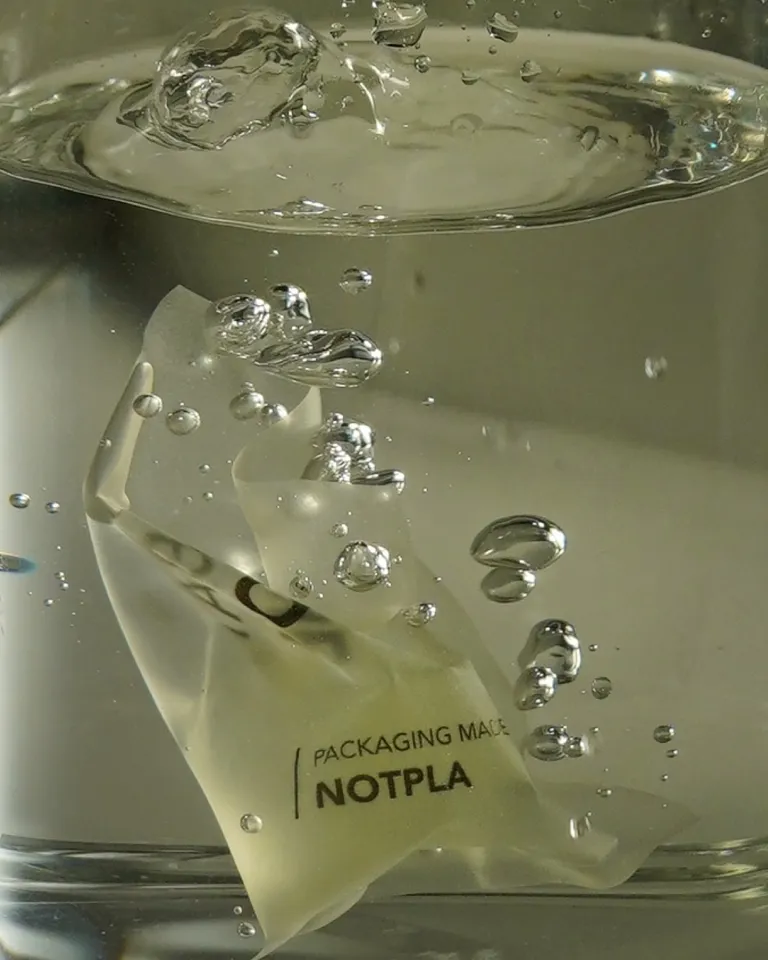
Algae-based alternatives to plastic packaging Images left, Lonlong Han and Sam Scales / Image right, Lonlong Han
Hemp is a type of cannabis plant with strong, thick fibers that can be harnessed to create textiles, ropes, upholstery, and more. “You can build beautiful building materials with hemp,” De Man tells us, “even entire buildings from hemp and chalk.” De Man’s Exploded View Beyond Building uses zero-waste hemp panels, hemp floors, and hemp blocks, often called “hempcrete.”
“Hemp, like any plant, stores CO2 while growing,” De Man explains. As the amount of carbon dioxide that is held by hemp is more than the amount produced during production and transportation of the hempcrete, this is a carbon-negative material. “Growing hemp also prevents soil subsidence and improves soil quality, so it’s a win, win, win.”
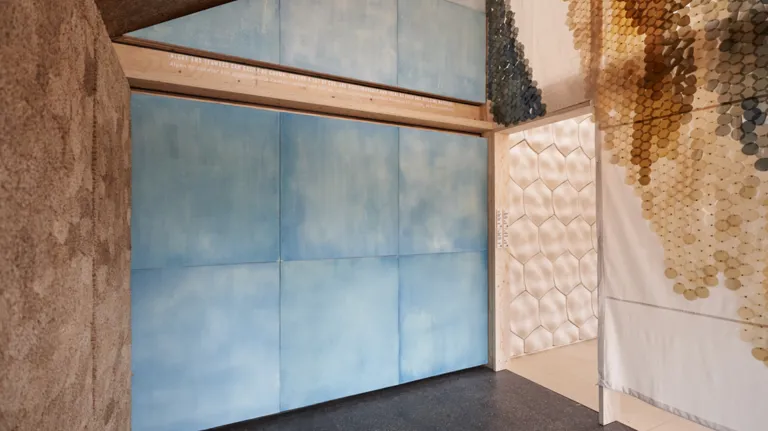
Algae-based tiles decorate The Exploded View Beyond Building Image, About.Today
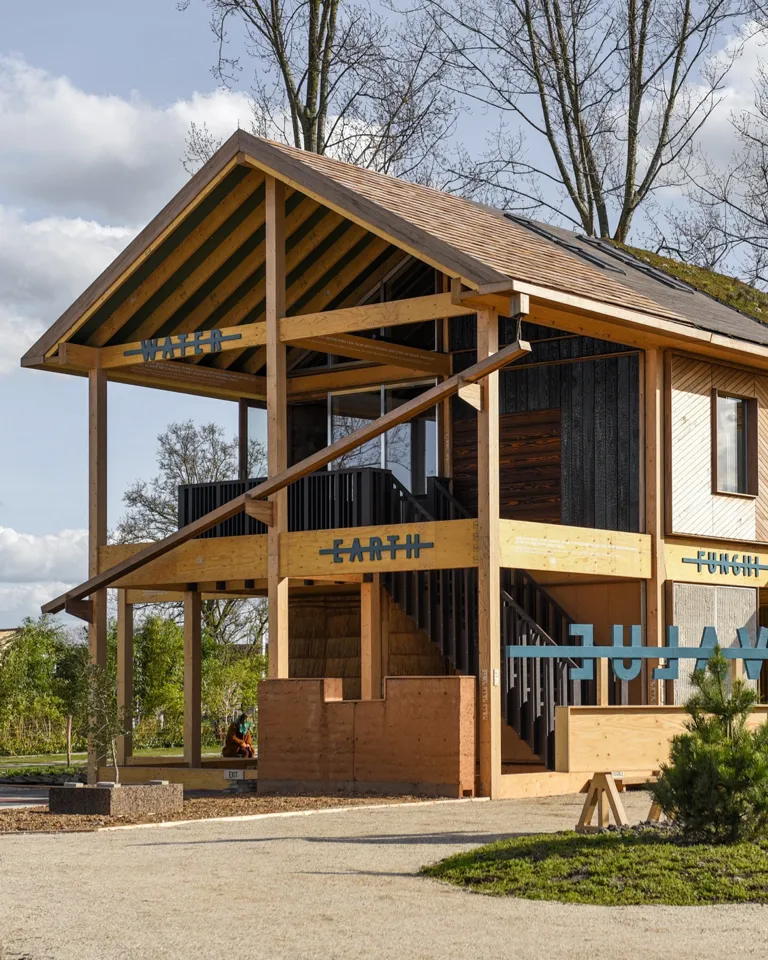
The house is made of 100 biomaterials Image left, Quint Verschuren / Images right, About.Today and Lisa Wernaart
In 2021, Parisian architectural firm Lemoal Lemoal unveiled the first public building in France to be made with hempcrete. Located in Croissy-Beaubourg near Paris, the Salle Sportive Pierre Chevet is a sports center with walls made from hempcrete blocks constructed by cement manufacturer Vicat.
The hemp fibers are sourced from plants grown in France and are assembled less than 500 kilometers from the site. Durable and high-performing, the bricks are coated in cladding with panels that can be replaced individually to ensure a longer lifespan for this public space.
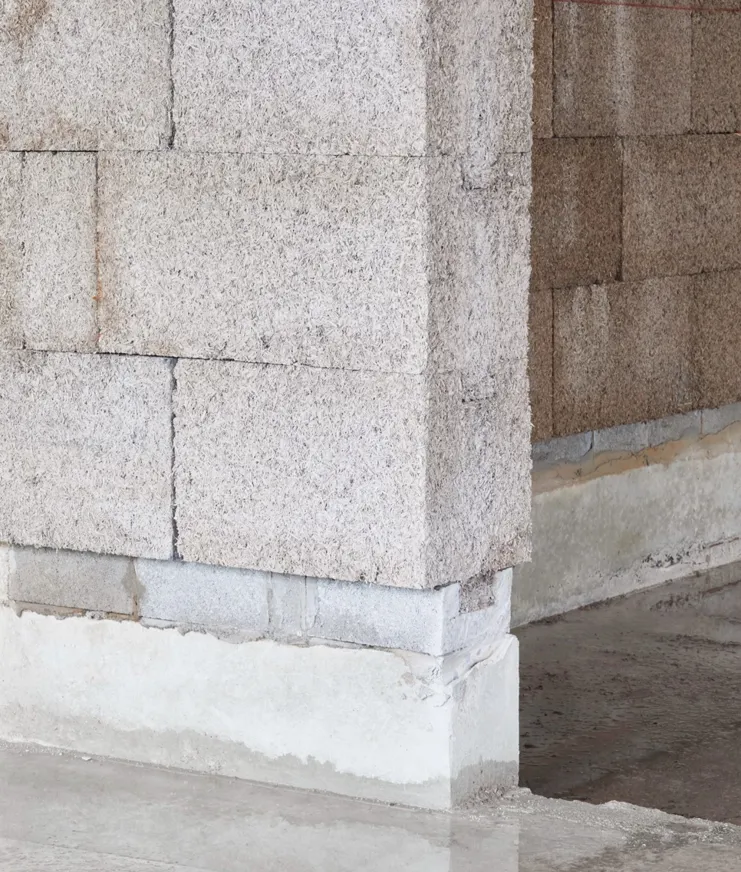
Lemoal Lemoal used hempcrete to build a Parisian sports center Image, Elodie Dupuis
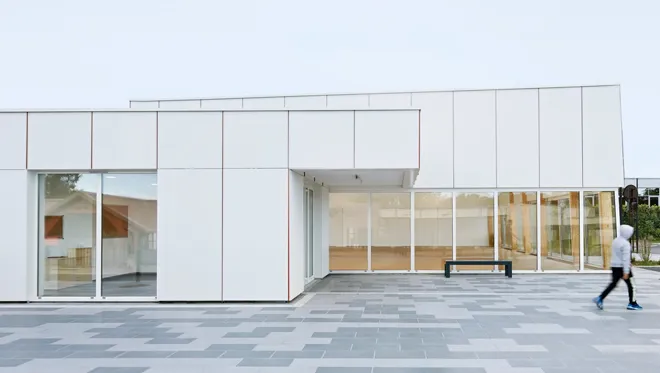
The center is the first public building in France to be made with hempcrete Image, Elodie Dupuis
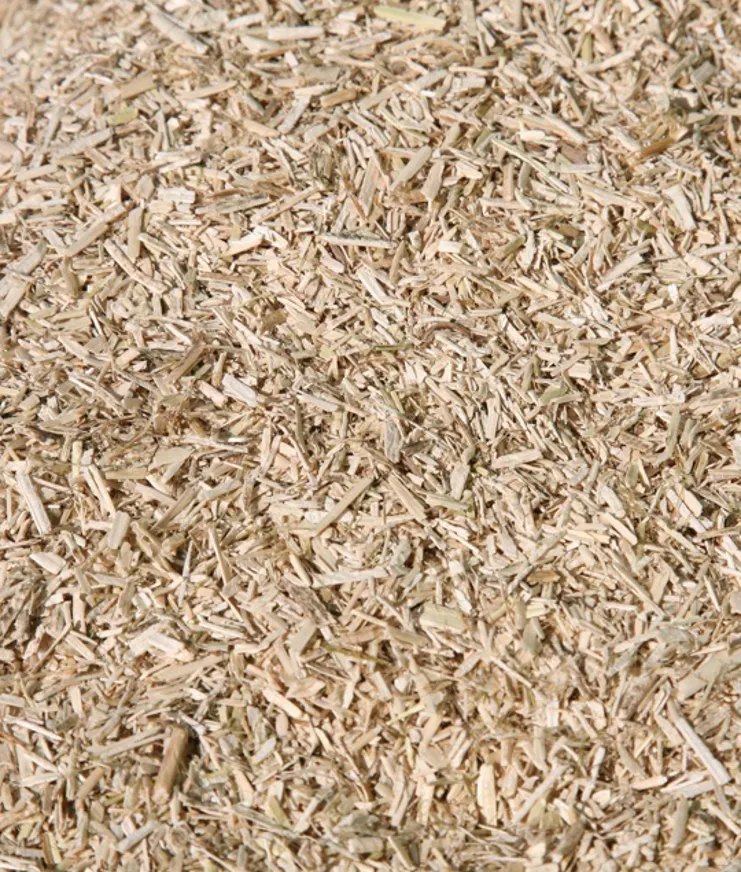
Hemp fibers are sourced from plants grown in France Image, VICAT
Among the most buzzed-about biomaterials today, mycelium is the underground root-like system of fungi. Today, the material is appearing as a leather alternative on runways and shelves of brands like Stella McCartney, Lululemon, Adidas, and Hermès.
The Growing Pavilion, a project by Biobased Creations in partnership with artist Pascal Leboucq and Krown Design, is made primarily with wood, mycelium, residual flows from the agricultural sector, cattail, and cotton. A room that is dedicated to mycelium calls upon the material to make flooring, wall tiles, and insulation. Calculations by the supplier, Krown.bio, show that two tons of carbon dioxide are captured from the atmosphere when producing one ton of mycelium. In addition to its environmental benefits, mycelium is a wonderful building material in its own right. “Mycelium has the highest acoustic value and the second highest insulation,” De Man tells us.

The facade of the Growing Pavilion is of mycelium on a wooden frame Images, Eric Melander
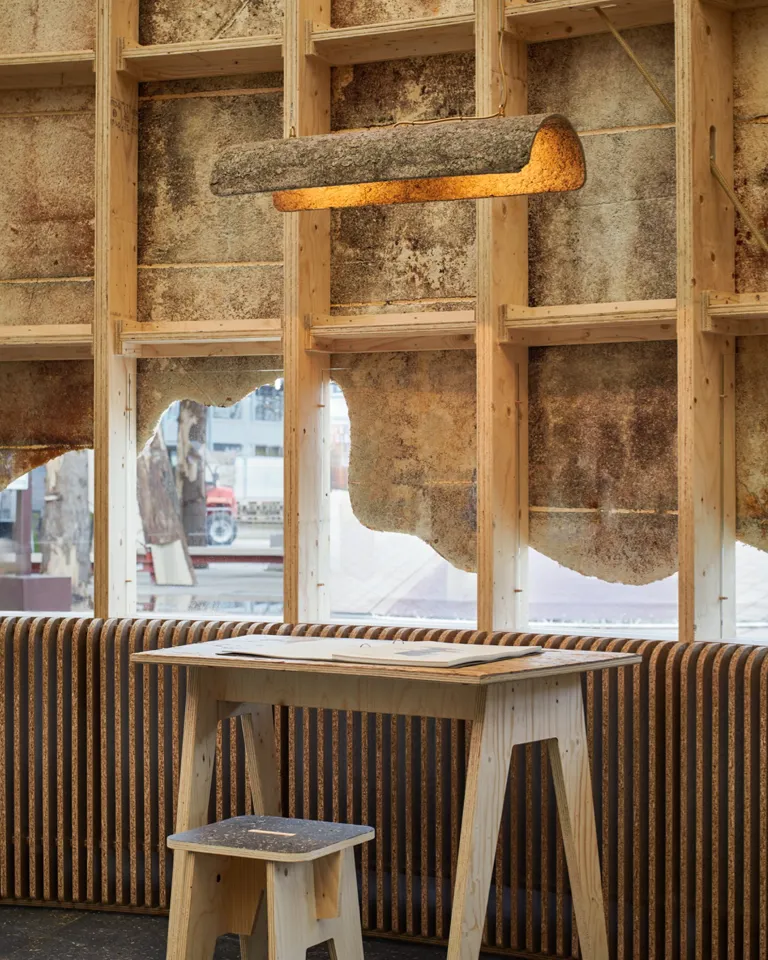
Mycelium is the underground root-like system of fungi
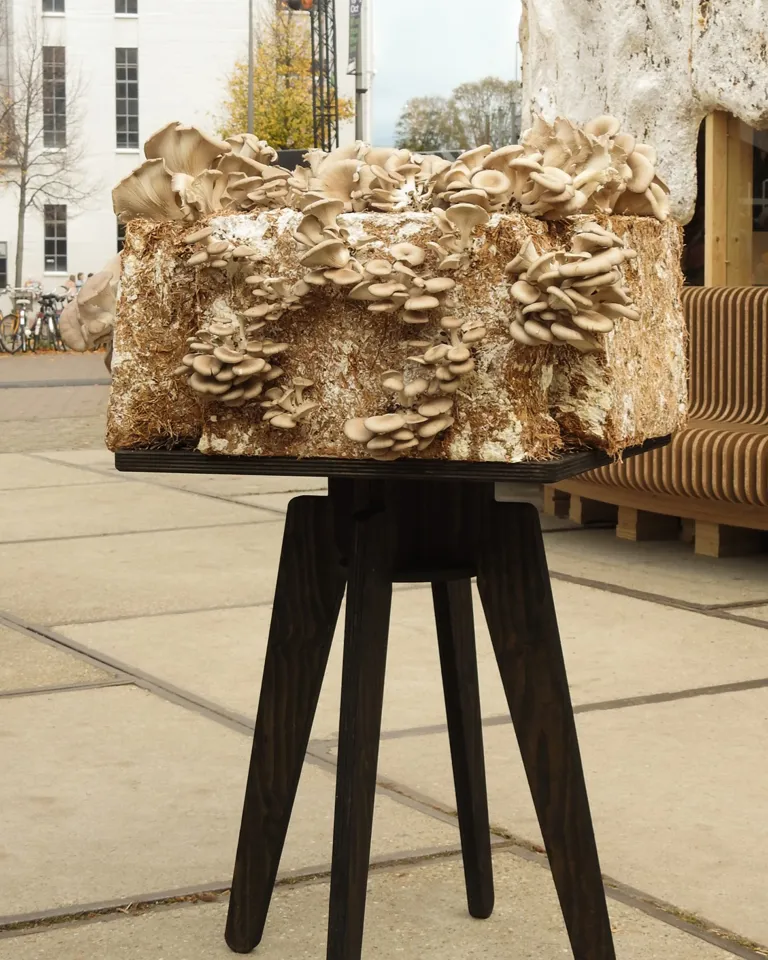
The fast-growing material insulates both temperature and sound
Mitchell Joachim is an architect, urban designer, and the founder of Terreform ONE, a research group that aims to combat the extinction of our planet’s species through pioneering acts of design. Since at least 2006, Joachim has been working with mycelium to create products that could replace styrofoam, acoustic tiling, and furniture systems.
Among his many projects is a chaise lounge made from Mycoform. The filling is made from mycelia substrate, which is a combination of discarded wood chips, gypsum, and oat bran that is consumed by mycelia and transformed into a durable material. “When you throw out this chair—if you ever do—it can go into a garden where it can feed thousands of other lifeforms” Joachim tells us.
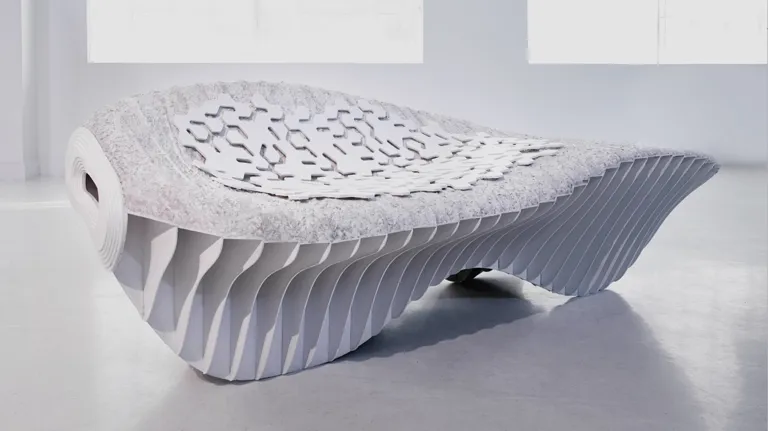
At the end of its life cycle, the chair can be composted and returned to nature Image, Mitchell Joachim, Terreform ONE
While many biomaterials sound futuristic, others are refreshingly simple: like salt. Henna Burney is a product and material designer based at Atelier LUMA, a design and research laboratory located in Arles, France, who specializes in developing new biomaterials. The Atelier hosted a contest for designers to submit their materials to be used in Frank Gehry’s tower for the LUMA art center in Arles. They selected a glass-like, naturally fireproof material made of salt by Karlijn Sibbel—who is now the Design Director at Notpla—to use as tiling to clad the interior of the building. Using the region’s ancient salt marshes, the panels grow on metal mesh in approximately two weeks.
“Because the Camargue region is so famous for its salt marshes, we wanted to use the natural crystallization process,” Burney told us. “On one hand, it was a way to show the knowledge, as there is no school to learn the process. One must learn from the sauniers. On the other hand, it was a way to show that salt has very interesting properties that we can explore through design.”
Today, Atelier LUMA is researching and developing new materials made of salt that can be produced within the existing salt industry. “We are not creating something new. These materials have been used for years and the process already exists. We are just using these processes in an intelligent way to create more sustainable materials.”
Videos, Alexandre Humbert
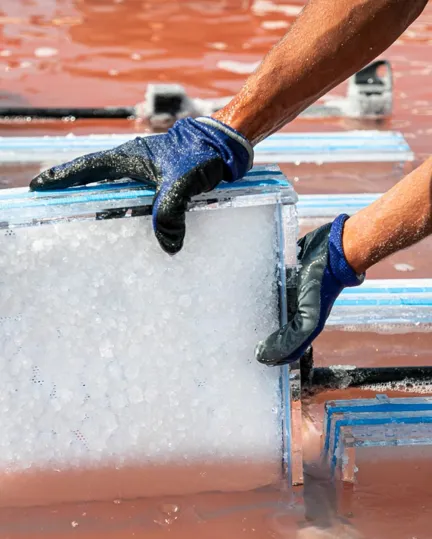
The salt material is made with the traditional techniques of the Camargue
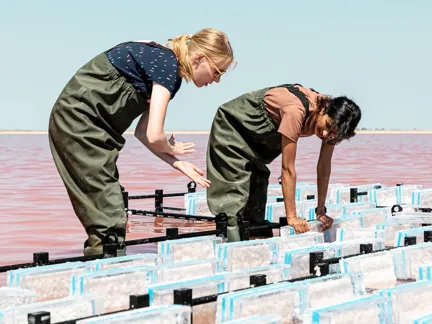
Sibbel and Burney at work in the salt marshes Images, Adrian Deweerdt
Henna Burney